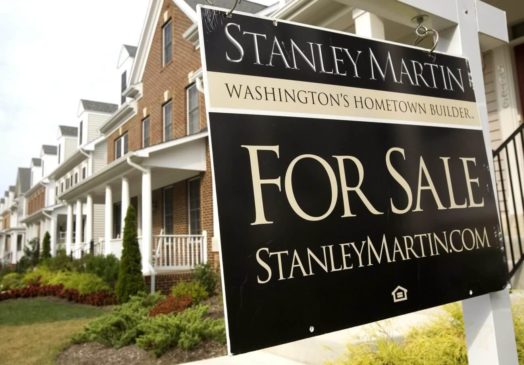- The housing market is basking in a deluge of positive data.
- There’s still one statistic that could spell trouble for the recovery in residential real estate.
- If this trend doesn’t reverse soon, resilient demand alone might not be enough to support home prices.
There’s no shortage of optimism in the U.S. housing market today. Home prices are up, new home sales shattered estimates, and mortgage rates are still holding near record lows.
But there’s one statistic the housing market bulls don’t want you to see: two out of three.
The Mortgage Industry Is Locking a Surprising Number of Homebuyers Out
That’s the Urban Institute’s estimate of how many mortgage loans underwritten in 2019 would be denied by at least one major lender today.
Michael Neal, a senior research associate at the think tank, told the Wall Street Journal that banks tightened their mortgage lending standards in the aftermath of the financial crisis and kept them tight throughout the decade that followed.
That helped prevent the housing market from getting overly frothy in the lead-up to the present economic downturn. But now that this new crisis is here, lenders are tightening their standards even more aggressively.
“Mortgage standards haven’t yet recovered from the great recession,” Neal said. “So there are a number of borrowers… who were already locked out before we came into the pandemic. Now the pandemic hits and we see a new round of tightening.”
From steep down payment minimums to credit score hikes to strict income verification standards that exclude borrowers with nontraditional employment situations, borrowers face unprecedented hurdles to obtaining mortgage financing.
This chart, which depicts the rapid collapse volume of mortgage credit available to borrowers, really says it all.
The upshot is that an enormous number of would-be homebuyers find themselves suddenly locked out of the market.
It’d be easy to blame this on the banks, but they’re responding to market forces. And – thanks to the government’s response to the economic crisis – those market forces have made it incredibly risky to underwrite loans they would have rubber-stamped just a few months ago.
Why Housing Market Bulls Can’t Bank on a Supply Shock
The effects of this credit crunch haven’t yet made themselves known in the headline data.
Even though financing is increasingly challenging to obtain, homebuyer demand remained surprisingly resilient throughout the lockdown.
And a sharp decrease in housing inventories forced those buyers who could obtain financing to bid against one another.
But housing market bulls can’t rely on a supply shock to inflate prices forever.
Inventories will rebound as the economy emerges from lockdown, especially since all the data seem to indicate it’s a relatively good time to sell a home.
More threats could emerge over the long term.
Investors have already slowed their purchases of residential properties. What happens if the impending “rental crisis” leads some landlords to sour on real estate, and those investors – many of whom financed their rental properties – begin to sell?
There’s also the looming threat of a foreclosure wave once the moratorium instituted by the CARES Act expires. Federal housing regulators suspended foreclosures and evictions for government-backed mortgages through June 30, while some states and localities have put all foreclosures on hold.
The good news is that there appears to be plenty of homebuyer demand to absorb a future uptick in supply. So much demand, in fact, that economists have identified the housing market as a potential catalyst to help drive the economy out of the recession.
For that to happen, though, homebuyers need more access to financing. But if mortgage credit is ever going to start flowing again, the government needs to give lenders a reason to turn on the taps.
Disclaimer: This article represents the author’s opinion and should not be considered investment or trading advice from CCN.com.
This article was edited by Sam Bourgi.




